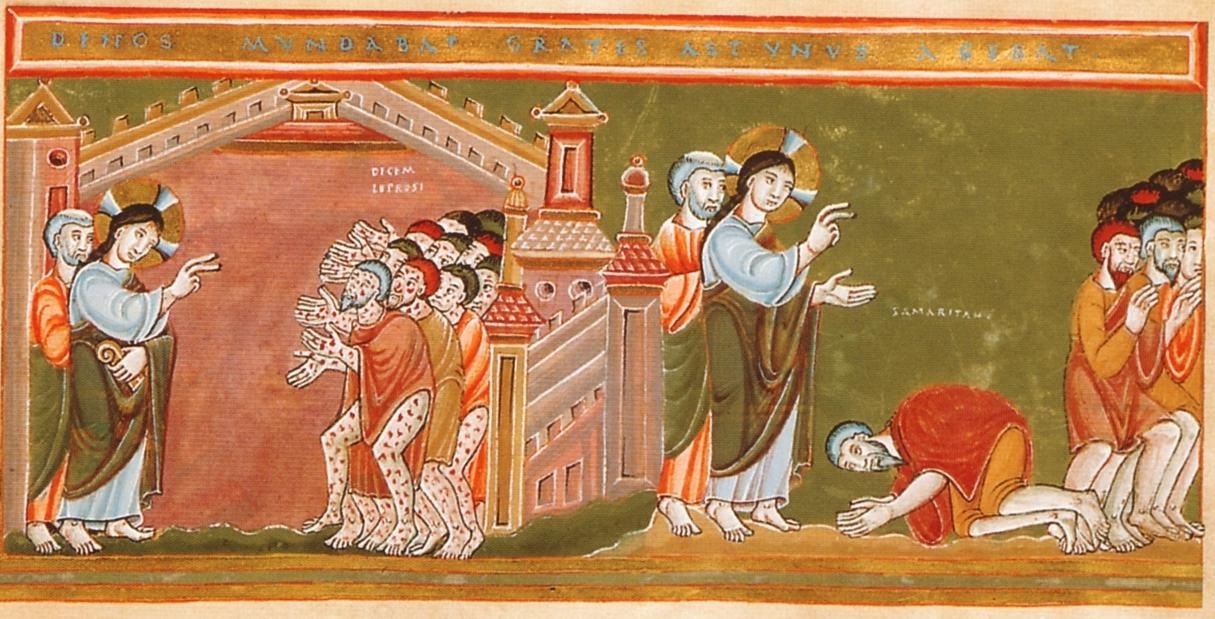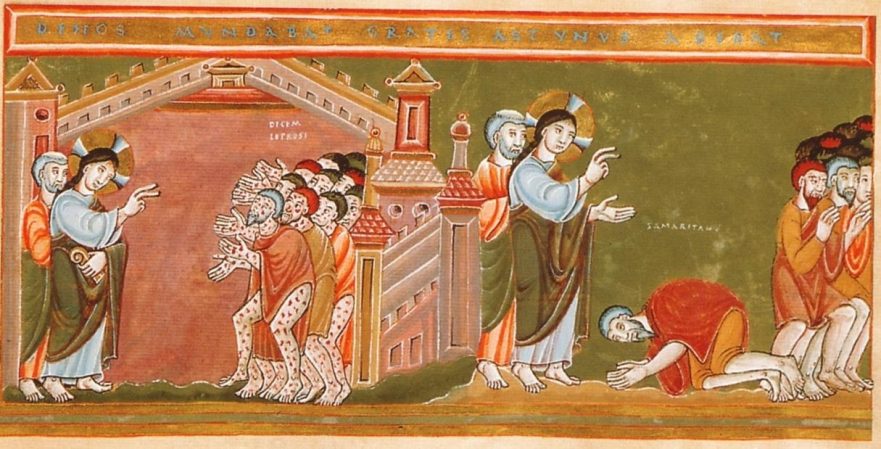This article is Joshua Tilton’s personal reflection based on his work on the Sending the Twelve: Conduct on the Road pericope for the Life of Yeshua project.
I am grateful to be living in a generation that has demonstrated a growing sensitivity toward issues of racial justice.[17] The struggle of minority groups to attain equal treatment under the law and to enjoy equal respect in society is commendable. We are all indebted to minority groups who have raised their voices in protest against inequality, not only for making our own societies more humane, but also for helping us to look back at our histories and at our sacred texts from a new—and I hope more inclusive—point of view. This blog is a tiny tribute to the ongoing struggle for racial justice and harmony in our world.
In our recent attempt to propose a Hebrew reconstruction of Jesus’ instructions to his twelve apostles (see Sending the Twelve: Conduct on the Road), David Bivin and I were confronted with a racially sensitive issue. According to the Gospel of Matthew, Jesus told the apostles not to enter any city of the Samaritans (Matt. 10:5). Reconstructing Jesus’ words in Hebrew raised an uncomfortable question that, as far as we are aware, has never before been considered by New Testament scholars. The question is: What Hebrew word did Jesus use to refer to the Samaritans? This is a sensitive question because, of the two Hebrew alternatives, the more common term in ancient Jewish sources is a racial slur.
Premium Members and Friends of JP must be signed in to view this content.
If you are not a Premium Member or Friend, please consider registering. Prices start at $5/month if paid annually, with other options for monthly and quarterly and more: Sign Up For Premium

- [1] According to 2 Kgs. 17:24, “The king of Assyria brought people from Babylon, Cuthah, Avva, Hamath, and Sepharvaim, and placed them in the cities of Samaria instead of the people of Israel; and they took possession of Samaria, and dwelt in its cities” (RSV). Why did some Jews choose to refer to the Samaritans as “Cutheans,” after the second people group mentioned in the list, rather than “Babylonians,” the first people group that is mentioned? The reason probably has to do with the close identification of the Jewish community with Babylon. Throughout the Second Temple period and beyond, Babylon was an important center of Jewish civilization. Some Jews were identified as “Babylonians” (cf., e.g., m. Yom. 6:4; m. Men. 11:7), and although this designation was not necessarily complimentary, it was less effective for discrediting an Israelite’s ancestry than “Cuthean.” ↩
- [2] See Menachem Mor, “Who Is a Samaritan?” in Who Is a Jew?: Reflections on History, Religion, and Culture (ed. Leonard J. Greenspoon; West Lafayette, Ind.: Purdue University Press, 2014), 153-168, esp. 157, 163. ↩
- [3] In Ezra 4:1, the Hebrew term הַשֹּׁמְרֹנִים (hashomronim, "the Samaritans") does not appear, instead the Samaritans are referred to as צָרֵי יְהוּדָה וּבִנְיָמִן (tzārē yehūdāh ūvinyāmin, "the adversaries of Judah and Benjamin"). It is their statement in Ezra 4:2 that they had been worshipping the God of Israel since the king of Assyria had brought them into the land—evidently an allusion to the story of the Samaritans' origin in 2 Kings 17—that identifies this group as Samaritans. Mor, however, denies this identification. See Menachem Mor, “Samaritan History: The Persian, Hellenistic and Hasmonean Period,” in The Samaritans (ed. Alan D. Crown; Tübingen: Mohr [Siebeck], 1989), 1-18, esp. 6. ↩
- [4] On the historical issues involved in Josephus’ account of the Samaritans under Antiochus IV, see Gedalyahu Alon, “The Origin of the Samaritans in the Halakhic Tradition,” in Jews, Judaism and the Classical World: Studies in Jewish History in the Times of the Second Temple Period and Talmud (trans. Israel Abrahams; Jerusalem: Magnes, 1977), 354-373, esp. 359-360; Mor, “Samaritan History: The Persian, Hellenistic and Hasmonean Period,” 13-15. ↩
- [5] On these competitors to the Jerusalem Temple, see Jörg Fey, “Temple and Rival Temple—The Cases of Elephantine, Mt. Gerizim, and Leontopolis,” in Gemeinde ohne Tempel/Community without Temple (ed. Beate Ego, Armin Lange, and Peter Pilhofer; Tübingen: Mohr Siebeck, 1999), 171-203. Procopious of Caesarea mentions yet another Jewish temple that may have existed in the Second Temple period and that lasted until the reign of Justinian in the sixth century C.E. (Buildings 4:2 §21-23). ↩
- [6] See Stephen G. Rosenberg, “The Jewish Temple at Elephantine,” Near Eastern Archaeology 67.1 (2004): 4-13. ↩
- [7] On the temple in Leontopolis, see Robert Hayward, “The Jewish Temple at Leontopolis: A Reconsideration,” Journal of Jewish Studies 33 (1982): 429-443; Abraham Wasserstein, “Notes on the Temple of Onias at Leontopolis,” Illinois Classical Studies 18 (1993): 119-129; Erich S. Gruen, “The Origins and Objectives of Onias’ Temple,” Scripta Classica Israelica 16 (1997): 47-70; Joan E. Taylor, “A Second Temple in Egypt: The Evidence for the Zadokite Temple of Onias,” Journal for the Study of Judaism 29.3 (1998): 297-312. ↩
- [8] The precise status of the Samaritans continued to be debated among the rabbinic sages until around the time of the Bar Kochva revolt (132-135 C.E.). See Lawrence H. Schiffman, “The Samaritans in Tannaitic Halakhah,” Jewish Quarterly Review 75.4 (1985): 323-350. ↩
- [9] Josephus uses a similar term, ἀλλόφυλος (allofūlos, "different tribe") to refer to a Samaritan woman (Ant. 11:306). ↩
- [10] On the Samaritans in the writings of Josephus, see Louis H. Feldman, "Josephus' Attitude Toward the Samaritans: A Study in Ambivalence," in Jewish Sects, Religious Movements and Political Parties (ed. Menachem Mor; Omaha, Nebr.: Creighton University, 1992), 23-45. ↩
- [11] As a direct consequence of the massacre, Felix was made governor of Judea, and it was under his watch that conditions began to deteriorate so seriously that war with Rome became inevitable. ↩
- [12] Another thing we learn from Josephus’ story and the story Luke reports about Jesus and the Samaritan villagers is that, for the most part, it was perfectly safe for Jews to travel through Samaria and most of the time the assumption that Jews could find food and lodging in Samaritan villages was a reasonable expectation. ↩
- [13] Here again we have an example of Jews and Samaritans living together in evident harmony. ↩
- [14] On the Good Samaritan parable, see Marc Turnage, “The Good Samaritan.” ↩
- [15] See our more detailed discussion in Sending the Twelve: Conduct on the Road. ↩
- [16] As the sages said, “A minor transgression leads to a major transgression, and the performance of a single mitzvah (i.e., 'good deed' or 'commandment') leads to the performance of many mitzvot." The sages also said, “Avoid every unseemly thing and anything that resembles it” (cf. m. Avot 4:2; Avot de-Rabbi Natan, Version A, chpt. 2:1 [ed. Schechter, 9]; Did. 3:1). These are expressions of the hasidic piety in early rabbinic Judaism that are especially close to the ethics of Jesus. ↩
- [17] My optimistic view that our generation has demonstrated a growing sensitivity toward issues of racial justice in no way negates the reality of continued incidents of violence, hatred or discrimination. Neither do I wish to gloss over the very real pain endured by those who have experienced the cruel effects of racial injustice. I am merely expressing a hopeful view that sensitivity concerning these issues may be growing. If that sensitivity is to continue growing and bear meaningful fruit in our societies, then, of course, it must be carefully tended and nurtured. I hope that I may continue to learn and grow and be open to correction when I demonstrate my own ignorance and prejudices. ↩





Comments 1
Superbly researched and beautifully written; a thought-provoking and timely article, especially in view of recent world events. Thank you, Joshua.